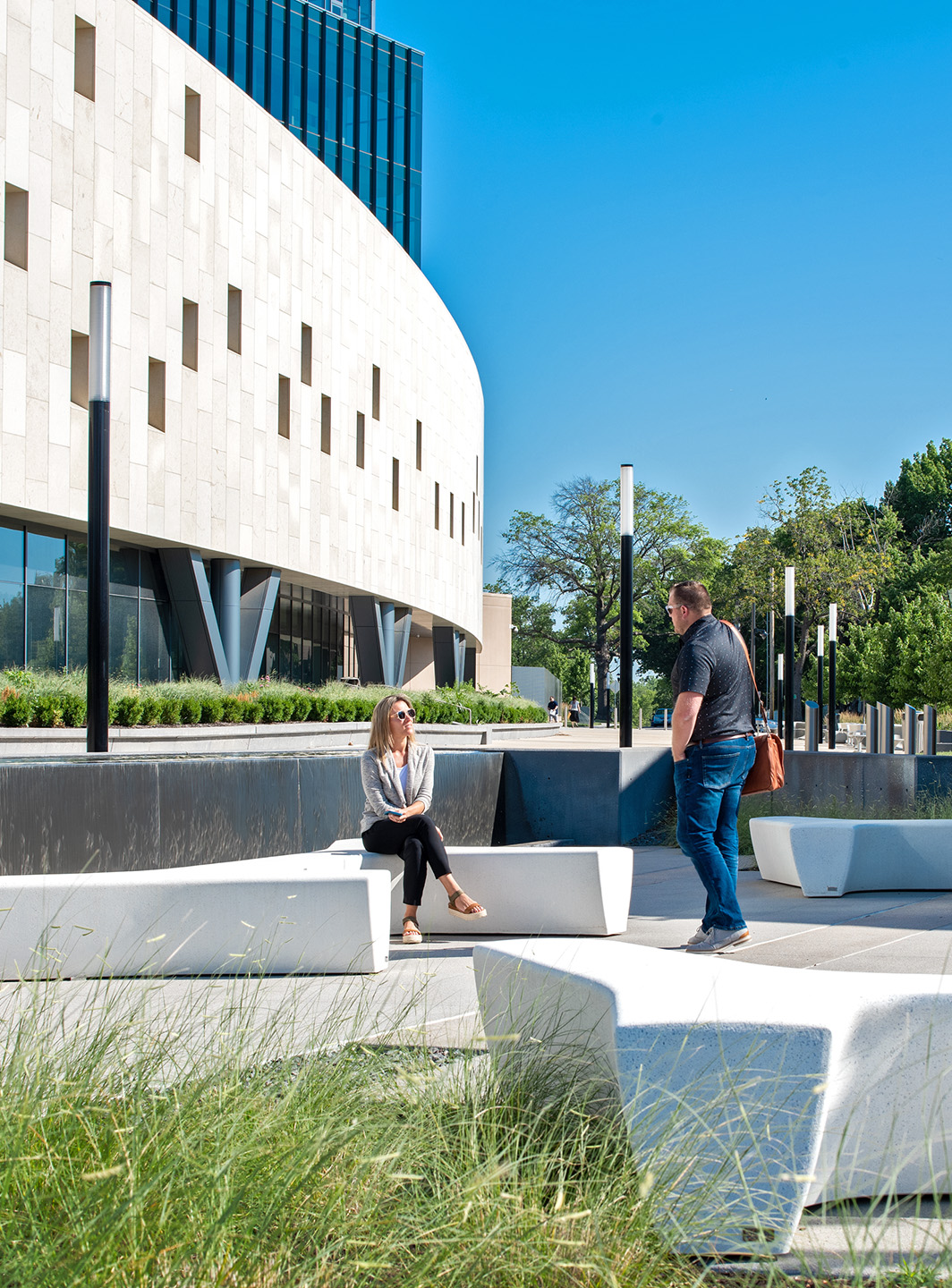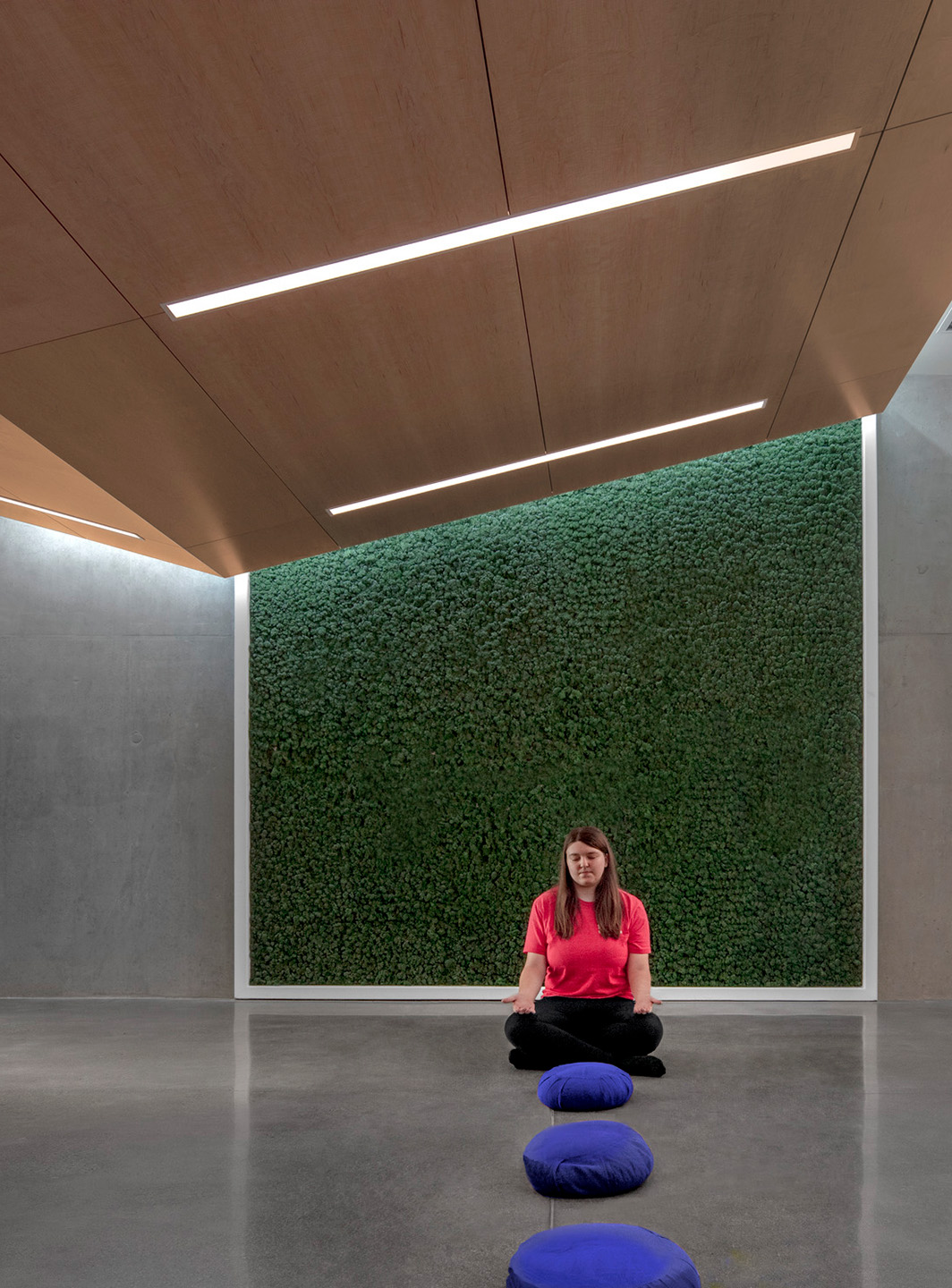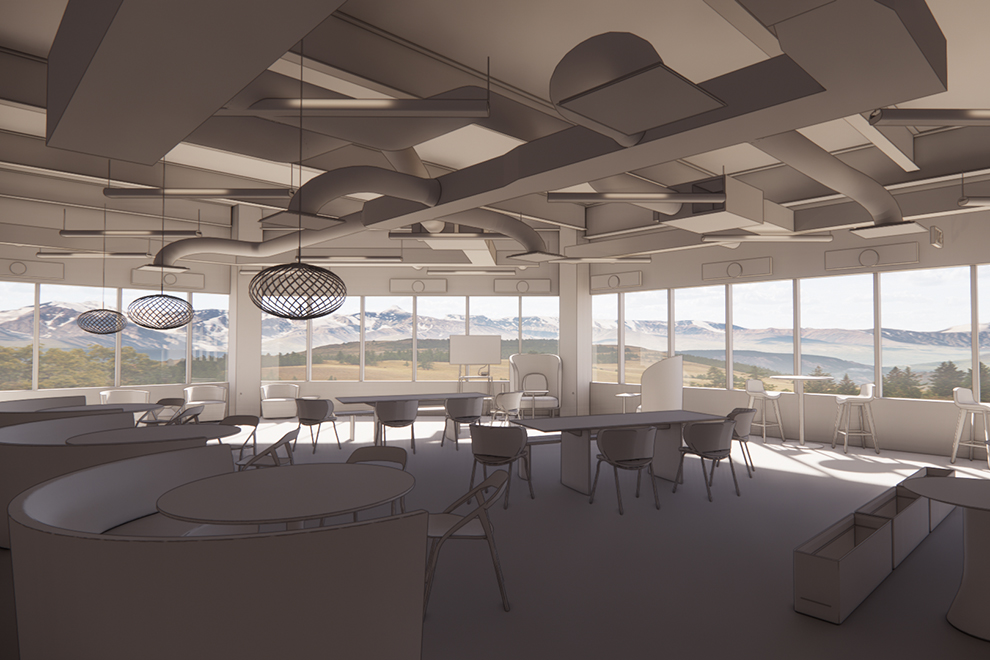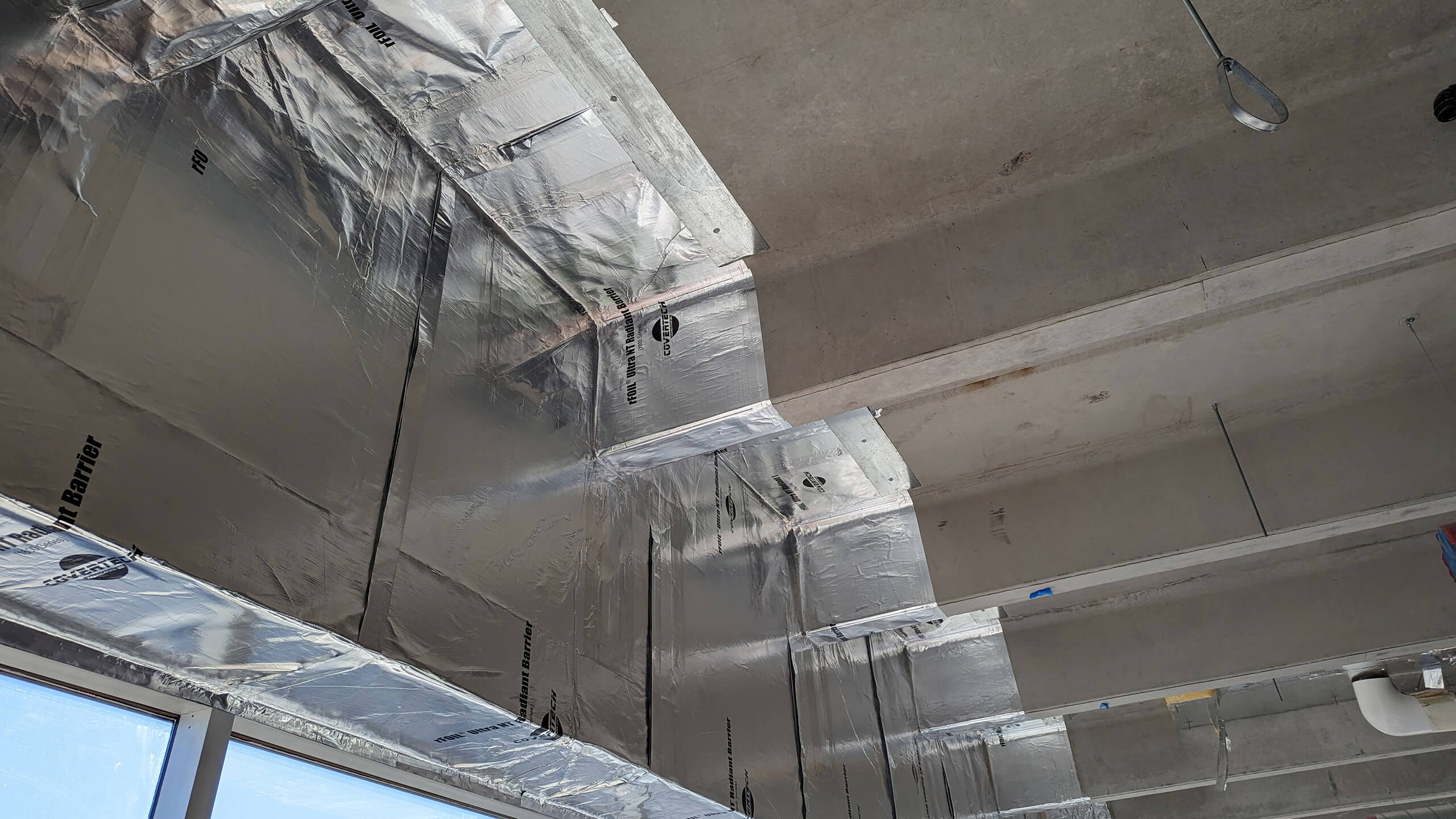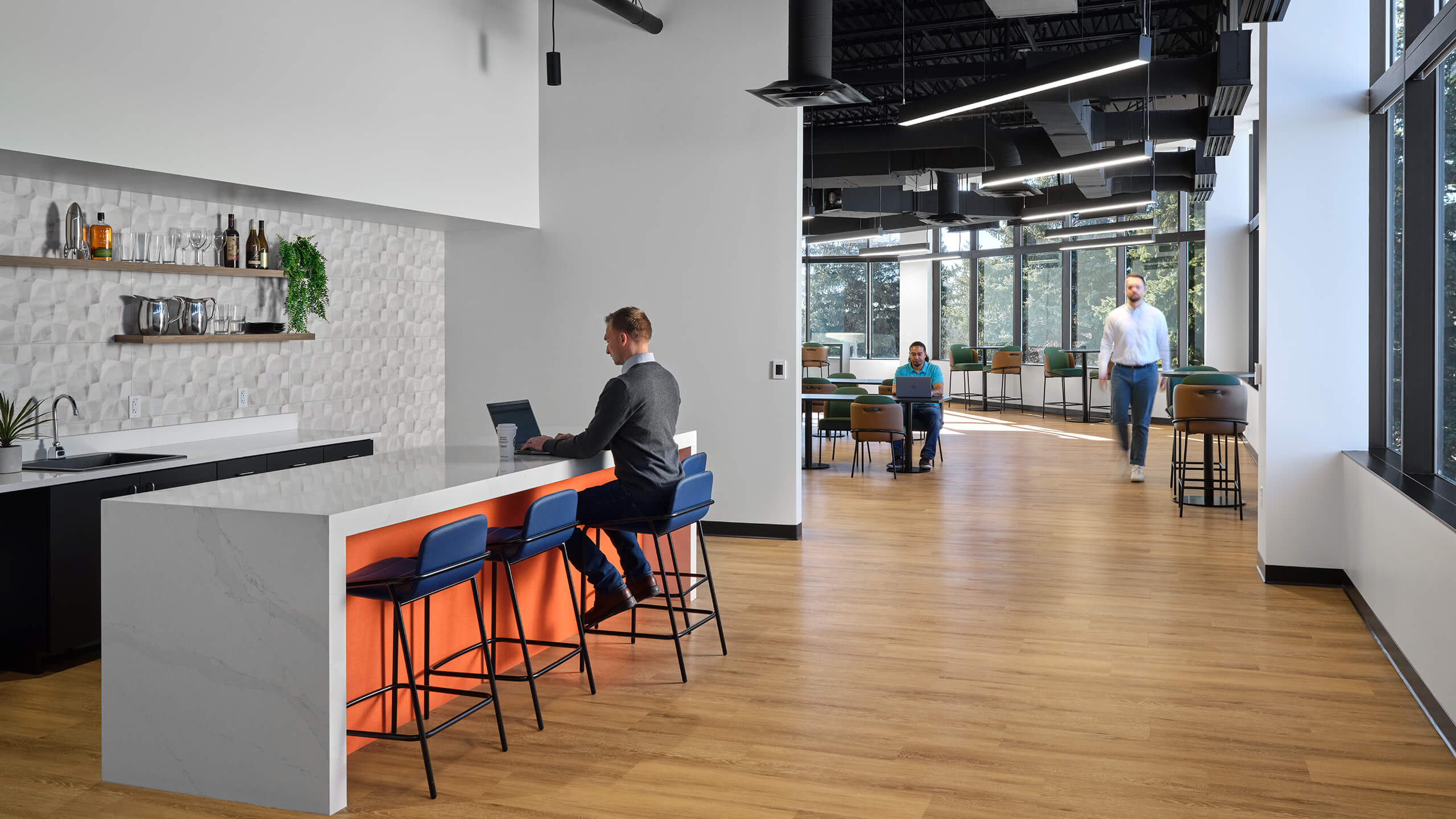Redefining SCIFs: Balancing security and employee well-being
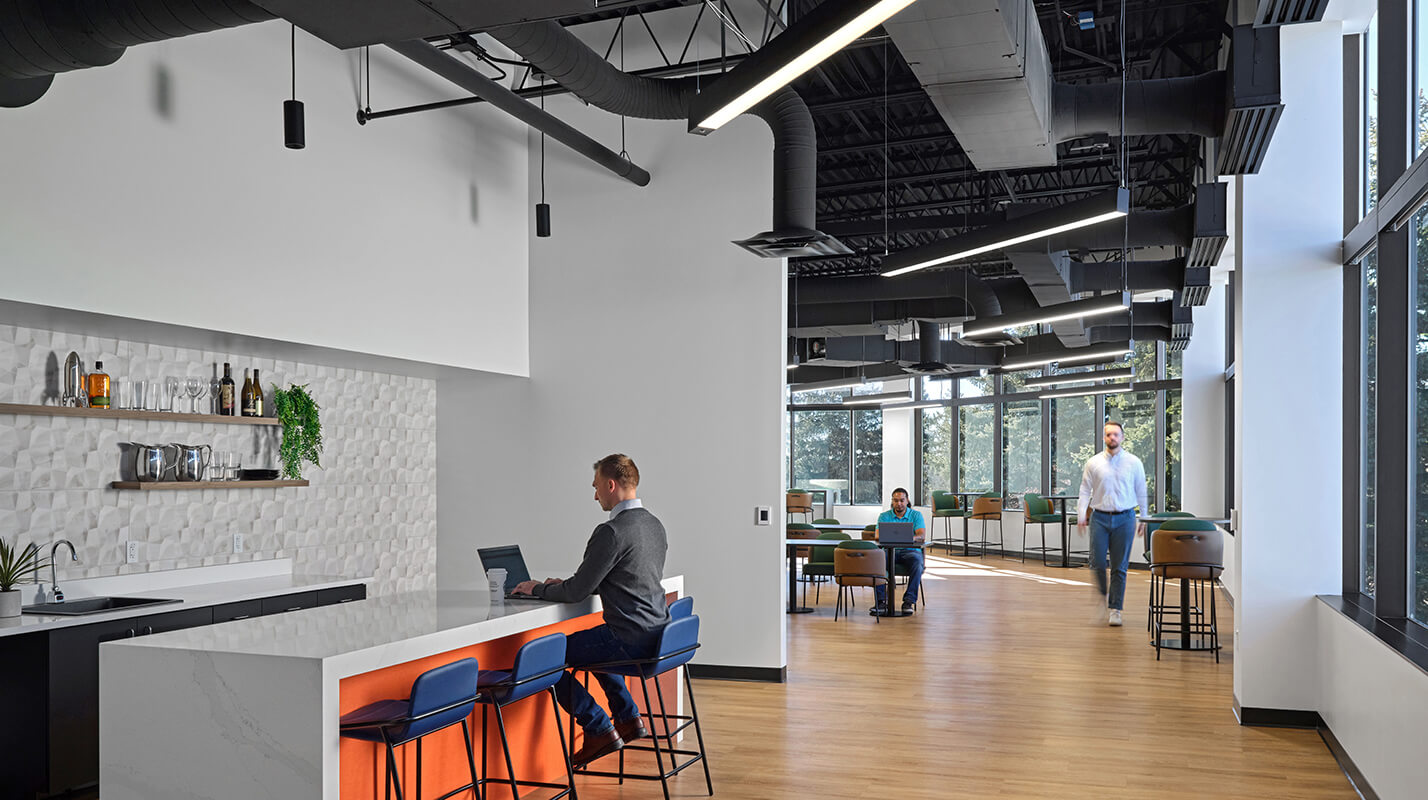
This article was featured in the August 2025 issue of the Aerospace Manufacturing and Design’s Magazine under the headline “Designing secure and comfortable SCIFs’. You can view the feature here.
As governmental agencies, aerospace firms, and private industries seek to protect their most sensitive information, the demand for sensitive compartmented information facilities (SCIFs) continues to grow. Traditionally, these spaces were stark, windowless rooms designed purely for security. However, organizations recognize that while security remains paramount, SCIFs must also be functional, engaging workplaces. Striking this balance is no small feat, requiring a deep understanding of evolving security enforcement, architectural integration, and human-centric design.
The key to a successful SCIF is planning. Early-stage design decisions significantly impact the ease of compliance with stringent regulations such as Intelligence Community Directive 705 (ICD 705) governing the construction and accreditation of these spaces.
Organizations must consider multiple layers of security – acoustic, visual, and RF shielding – to ensure classified information remains protected. A common misconception is that a SCIF is simply a more secure office. In reality, the level of control required extends into every detail, down to seemingly minor elements such as conduit grounding, which, if mishandled, can become an unintended listening device.
As SCIF use expands beyond defense and intelligence agencies into corporate sectors, understanding these complex requirements is more critical than ever. A well-designed SCIF is not just about securing information; it must also support productivity, collaboration, and employee well-being. Organizations must also stay ahead of evolving security standards and enforcement to meet these complex requirements, which have become increasingly stringent in recent years.
Ensuring effective stakeholder collaboration
Designing a SCIF is not just an architectural challenge – it’s an exercise in collaboration. The specialized nature of these spaces means misalignment among stakeholders can lead to costly mistakes, security vulnerabilities, and significant project delays. A successful SCIF project requires a structured order of operations, ensuring security, design, and construction teams are aligned from the start.
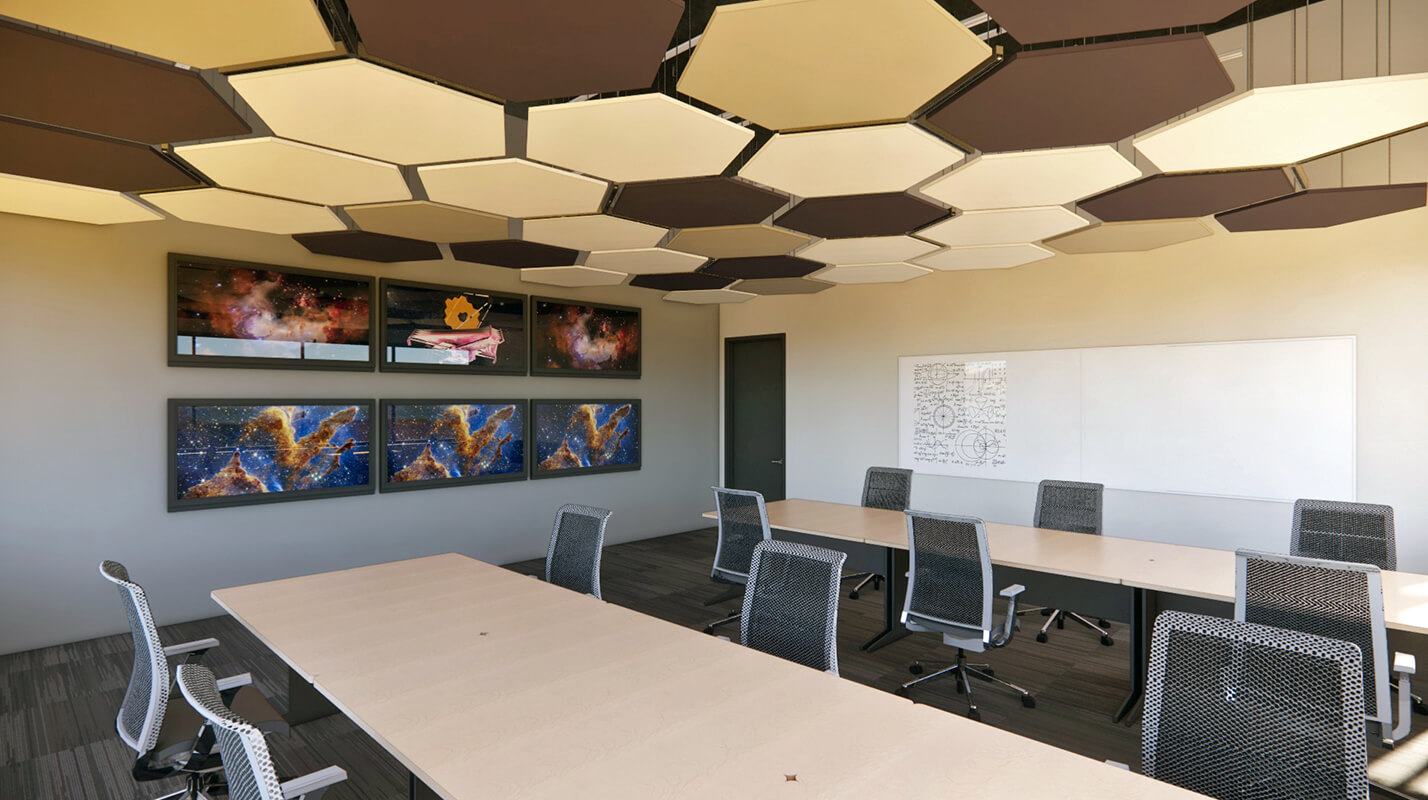
Key stages of SCIF development include:
- Initial security assessment – Establishing the project’s security parameters and identifying potential vulnerabilities early
- Conceptual design – Developing a layout meeting security requirements while accommodating operational needs
- Regulatory collaboration – Engaging with accrediting agencies early to set expectations and avoid last-minute changes
A common pitfall is assuming a general contractor who has built secure facilities before can handle a SCIF without additional education. SCIFs involve unique construction techniques, from RF shielding integration to acoustic controls. Without specialized knowledge, even well-intentioned contractors can introduce vulnerabilities. The best approach is collaborative, where architects, security experts, and contractors work in lockstep from day one. This collaborative approach is particularly critical when SCIFs are integrated into existing buildings, where infrastructure limitations add another layer of complexity.
Building SCIFs in existing infrastructure
Most SCIF projects are not new constructions but retrofits within existing buildings. Adapting office spaces to meet SCIF requirements presents distinct challenges: outdated infrastructure, spatial constraints, and conflicting security needs. These factors make it even more essential to approach each project flexibly and creatively.
One major challenge in renovations is balancing security compliance with cost-effective modifications. Many older buildings lack the necessary physical and RF security elements, requiring substantial upgrades. To navigate these limitations, organizations can employ targeted solutions including:
- Structural modifications – Reinforcing walls and floors without excessive demolition
- Adapting existing systems – Upgrading HVAC, electrical, and fire suppression systems to meet security requirements
- Program optimization – Ensuring programs housed in RF-shielded areas require that level of protection
A recent SCIF renovation for a leading technology company showcased how thoughtful planning can transform an outdated space into a secure yet inviting workplace. The client needed a classified environment but also wanted access to daylight and a sense of openness – two aspects rarely associated with SCIFs. The solution? RF-shielded windows, carefully controlled lighting, and modular acoustic treatments preserved security and employee comfort. While retrofitting SCIFs presents unique challenges, organizations must also consider the human element – ensuring these high-security spaces remain functional and comfortable for employees.
Stay ahead of compliance without sacrificing wellness
Our Advanced Industries team can help you reach further.
Balancing security and employee comfort
Historically, SCIFs have been dimly lit, enclosed spaces designed with security as the only priority. However, as organizations recognize the importance of employee well-being, SCIF designs are evolving to become more human-centric. Today’s SCIFs must compete with tech giants such as Google and X, where employees enjoy amenities designed to foster creativity and retention. Companies failing to modernize risk losing talent to more appealing workplaces. Innovative solutions now allow SCIFs to integrate features to enhance employee well-being without compromising security:
- RF-shielded windows – Enabling daylight access while maintaining classified security
- Tunable LED lighting – Simulating natural daylight cycles to boost mood and productivity
- Ergonomic workspaces – Incorporating comfortable furniture and designated wellness areas
- Enhanced architectural details – stimulating interest and energy via visually striking components in floor, walls, and ceilings
One recent SCIF design incorporated colored hexagon acoustic ceiling panels, a different color for each room, echoed in the color of the carpet. In addition to creating vivid distinctions between the different programs housed in each room – each with its own independent working requirements – the colors also injected a spirit of recreation and innovation not found in the typical stark white industrial workspace.
Key takeaways for investing in SCIFs
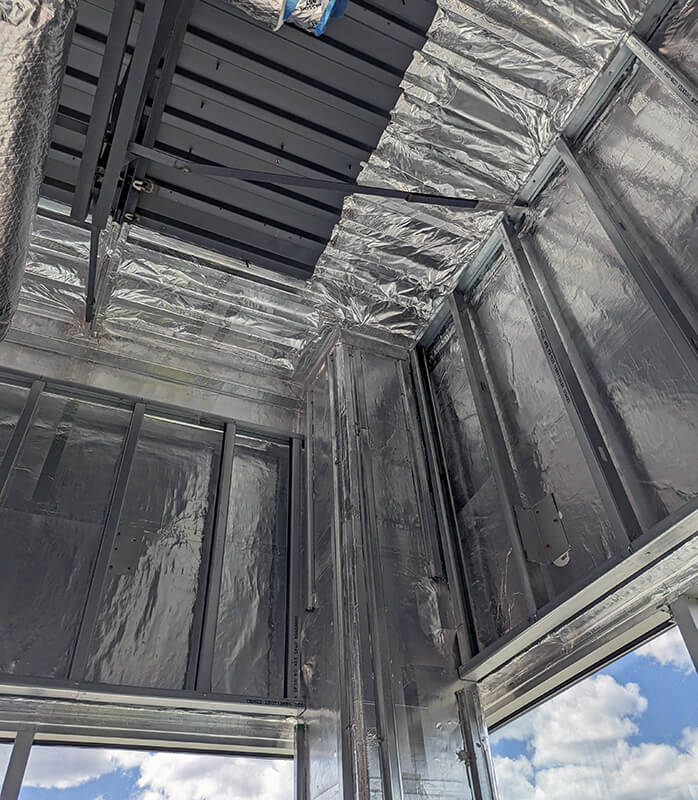
The future of SCIFs lies in robust security and in redefining them as holistic workplace environments supporting mission success and workforce satisfaction:
- Security enforcement vs. standards – While core SCIF requirements remain the same, enforcement has become significantly stricter
- Retrofitting vs. new construction – Most SCIFs are built within existing infrastructure, requiring innovative, cost-effective solutions
- Employee-centric design – Modern SCIFs must prioritize comfort to attract and retain top talent
- Future-proofing for compliance – Organizations must anticipate stricter enforcement in the future
- Collaboration is key – Engaging all stakeholders early prevents costly missteps and ensures a smoother accreditation process
Beyond security
SCIF design is not solely about securing classified information but also creating environments supporting security and employee well-being. With increasing enforcement, shifting workplace expectations, and advancements in security technology, organizations must rethink how these spaces function in a modern professional landscape. By integrating strategic planning, innovative design, and effective collaboration, SCIFs can evolve from sterile, bunker-like environments into secure, inviting workplaces. This transformation ensures classified workspaces remain protected and are places where employees thrive. In an era where security and functionality must coexist, the future of SCIFs lies in balancing ingenuity and foresight.
Authors
Stay on the leading edge
Stay up to date on emerging trends, research, hot topics, and more delivered conveniently to your inbox.
"*" indicates required fields

